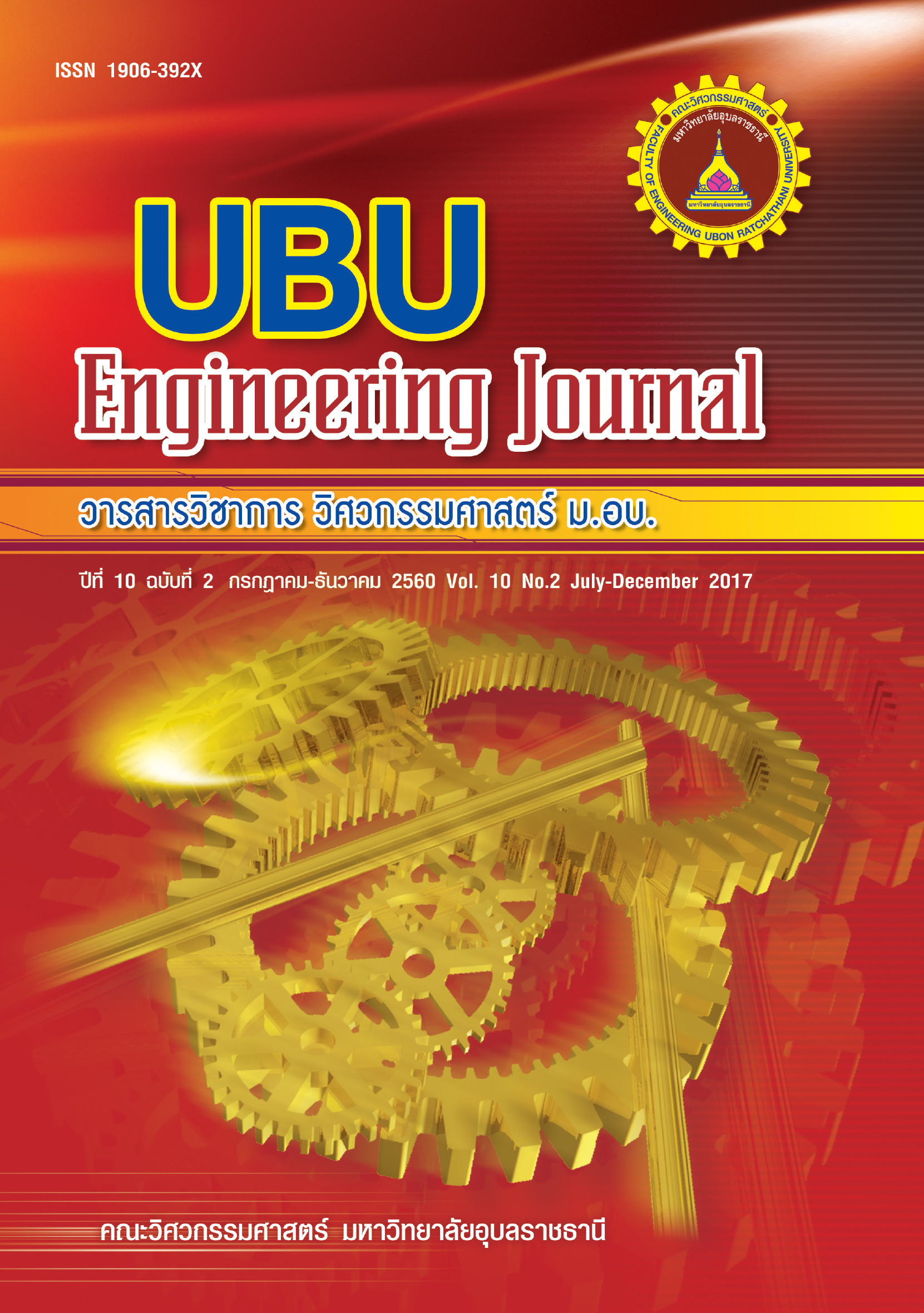การประเมินประสิทธิภาพของแบบจำลองอุทกวิทยา KW-GIUH และ BTOPMC ในการจำลองน้ำท่าในลุ่มน้ำยมตอนบน
Main Article Content
Abstract
The hydrological models have been invented by using principle of hydrology and mathematical model. Currently, there are several types of hydrological model. The hydrological models are important equipment for research and working in water resources engineering. The objective of this study to assess a performance of semi-distributed model for runoff simulation in Upper Yom River basin, which located in north of Thailand and suffer frequent floods. The hydrological models included in the study are KW-GIUH and BTOPMC model, which are semi-distributed model that use geological data to define the physical characteristics of sub-watershed and rainfall from storm event for runoff simulation. For assessing the model performance, the results of the calibration and validation method of the two models were investigated by comparing with the discharge data from observation stations and using the Nash-Sutcliffe model efficiency coefficient to assess the model performance. Then, the performances of both models are compared in order to identify the appropriate hydrological model for the situation with high precision. The results revealed that both model can be simulated hourly runoff in Upper Yom River basin satisfactory. The NSE are higher than 0.75, but KW-GIUH has a slightly better performance than BTOPMC.
Article Details
References
[2] Lee KT, Yen BC. Geomorphology and Kinematic Wave Based Hydrograph Derivation. J Hydraul Eng ASCE. 1997; 2(1): 73–80.
[3] Lee KT. Generating Design hydrographs by DEM assisted geomorphic runoff simulation: A case study. J American Water Resour Assoc. 1998; 34(2): 375–384.
[4] Ao TQ. Development of a distributed hydrological model for large river basins and Its application to Southeast Asian rivers. Ph.D. Dissertation. University of Yamanashi. 2000.
[5] Nawarathna NMNS B. Method to delineate blocks in BTOPMC model for large scale watersheds. J Hydraul Eng ASCE. 2000; 48(1): 61–66.
[6] Wang G, et al. Grid-based distribution model for simulating runoff and soil erosion from a large-scale river basin. Hydrological Processes. 2009; 24(5): 641–653.
[7] Nawarathna NMNSB, Ao T, Kazama S, Sawamoto M, Takeuchi K. Influence of human activities on the BTOPMC model Runoff Simulations in Large scale Watersheds. In: XXIX IAHR Congress Proceedings, Theme A. 2001. p. 93–99.
[8] สำนักชลประทานที่ 1. การบริหารจัดการน้ำแม่น้ำยม. เข้าถึงได้จาก: irrigation.rid.go.th/rid4/jone_water/ data/2552/pland/25-06-52/ES01.doc [เข้าถึงเมื่อ 19 ตุลาคม 2559].
[9] หน่วยงานราชการจังหวัดแพร่. โครงการพัฒนาลุ่มน้ำยมจังหวัดแพร่. เข้าถึงได้จาก: www.phrae. go.th/plan_yom.html [เข้าถึงเมื่อ 19 ตุลาคม 2559].
[10] Lian Y, Chan I-C, Singh J, Demissie M, Knapp V, Xie H. Coupling of hydrologic and hydraulic models for the Illinois River Basin. Journal of Hydrology. 2007; 34(4): 210–222.

